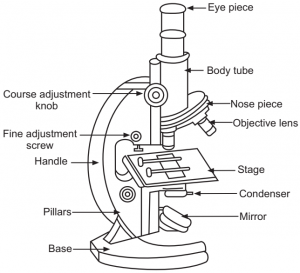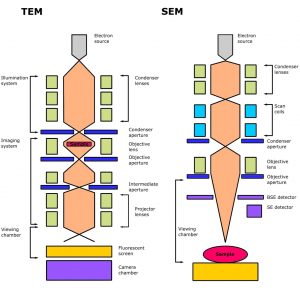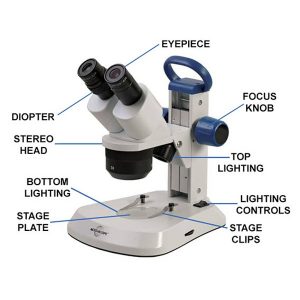What are the Types of Microscopes?

A microscope is a common apparatus, and it is actively used for various purposes, such as research, laboratory, and studies. So based on the type of application, or function, different types of microscopes are used. And if you want to find out more about the different types of microscopes, then you are in the right place. As here in the below article, we will cover more details about the varieties of microscopes, along with their various features, functions, and many more.
What is a Microscope?
Firstly, a Microscope is defined as the instrument or apparatus, that is used to view or observe very small objects or specimens using magnification glasses employed in it. Through these glasses, the users will be able to magnify the object up to 100 times to get a more detailed view.
Types of Microscopes
From the above sections, as you know, there are different types of microscopes available, each having its unique features and applications. These microscopes are,
- Simple Microscope
- Compound Microscope
- Electron Microscope
- Stereomicroscope
- Scanning Probe Microscope
Simple Microscope
The Simple Microscope is defined as a microscope that employs only one magnification Lens, for the magnification of different objects or samples. Besides, in this microscope, a convex lens includes a small focal length. The principle of the simple microscope is that a sample located within the focus point of a microscope will result in the formation of a virtual, erect, and magnified image at the least distance from the Lens or vision.

In this microscope, the magnifying power can be calculated by,
m = 1+(D/F)
Where m = magnifying power
D = Least Distinct Vision
F = Focal Length of Convex Lens
Compound Microscope
As you can guess from the name itself, this is a microscope that contains more than one Lens, to obtain a more detailed and magnified image of the object. Similar to the simple microscope, the magnifying power of this microscope is calculated using the equation,

m = (D/f1)+(D/f2)
Where, D = Least Distance of Distinct Vision
L = Length of Microscope Tube
f1= focal length of objective Lense
f2= focal length of eyepiece
Electron Microscope
This is a unique type of microscope that uses the source of illumination, by accessing the beam of accelerated electrons. Because of the improved illumination, the image formed by this microscope is generally of high resolution and has the magnifying abilities of up to nanometers. The principle of the Electron Microscope involves using a tungsten metal rod, and a magnetic coil. And when voltage is applied to the microscope, the movement of electrons becomes random, as they get excited.

Moreover, because of the excitation of electrons, a beam of light is formed, which can be used to magnify or focus on the samples, however, in this process, the magnetic coils play an important role in directing the beam of light onto the object or sample. Furthermore, based on the type of principle, the Electron Microscopes are differentiated into two types,
- Transmission Electron Microscope (TEM).
- Scanning Electron Microscope (SEM).
Stereo Microscope
To get a three-dimensional view of the sample or object, the stereomicroscope is commonly used. Because of this, it is often referred to as the dissecting microscope. Moreover, in this microscope, there are two separate objective lenses, with two separate eyepieces. This means the users can make use of two eyepieces to view a better image of the sample or concentrate on two samples at the same time.

Furthermore, the stereomicroscope uses only low power, hence it is mostly suitable for viewing opaque objects or samples. Besides this, the Stereomicroscope is actively used in microsurgery, observing crystals, and examination of historical artifacts.
Conclusion
So, if you have any problems understanding the various chapters or complex topics in the subject. Then joining online coaching classes might be a very good option. And if you are looking for a cost-effective online interactive class that is offered by the Tutoroot Platform. More importantly, these interactive classes offer various amazing features such as Doubt Clearing Sessions, Access to Best Educational Guides, Expert Staff, and a lot more.
For more simplified explanations like the one above, visit the physics blogs on the Tutoroot website. Elevate your learning with Tutoroot’s personalised Physics online tuition classes. Begin your journey with a FREE DEMO session and discover the advantages of one-on-one online guidance.
Frequently Asked Questions
What are the 2 main types of microscopes?
Compound Microscope and Simple Microscope are the two types of main microscopes.
Name other types of microscopes?
Besides this, there are other types of microscopes like Stereomicroscope, and Scanning Probe Microscope.
